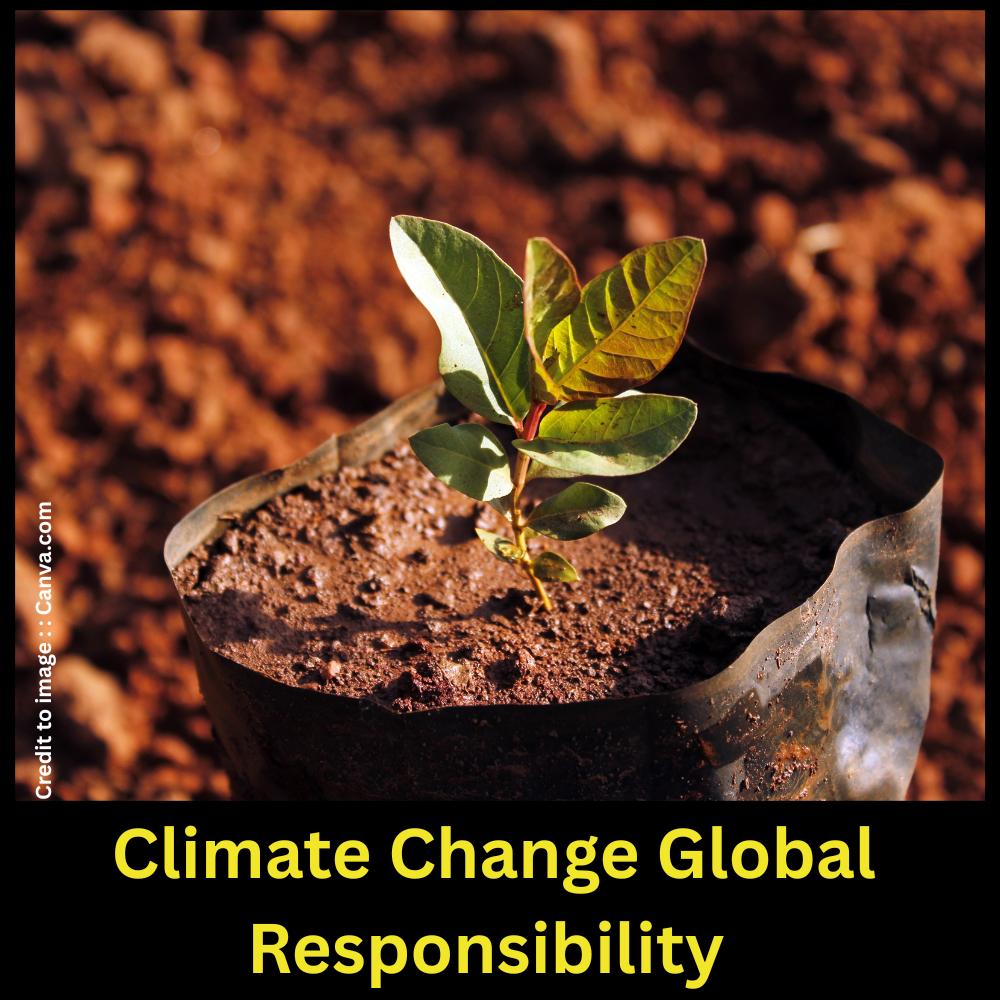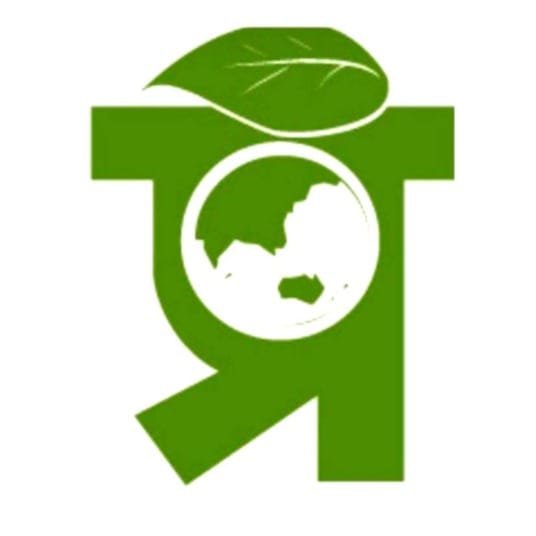Climate change is one of the greatest challenges of the 21st century, reshaping ecosystems, economies, and human lives across the globe. Driven largely by human activities such as burning fossil fuels, deforestation, and unsustainable industrial practices, it has led to rising global temperatures, extreme weather events, and biodiversity loss. Beyond the environment, climate change impacts human health, food security, and the global economy. Article “Climate Change Global Responsibility : Causes, Effects, Solutions” explores the causes, effects, solutions, and adaptation strategies related to climate change, while also highlighting the role of international cooperation in addressing this urgent crisis.


Table of Contents
- Introduction: What is Climate Change?
- Causes of Climate Change
- Effects of Climate Change on the Environment
- Impact of Climate Change on Human Health
- Climate Change and Biodiversity Loss
- Climate Change and the Global Economy
- Climate Change Solutions and Mitigation
- Adaptation Strategies Against Climate Change
- Role of International Agreements
- Climate Change in India: A Regional Perspective
- Climate Change Awareness and Education
- Future Predictions of Climate Change
- Summary
- Conclusion
- FAQs on Climate Change
- References
1. Introduction: What is Climate Change?
Climate change refers to long-term shifts in global or regional climate patterns, primarily caused by human-induced greenhouse gas emissions. Unlike natural climate variations, the current changes are rapid, widespread, and directly linked to human activities, posing risks to ecosystems, health, and sustainable development.c”Climate Change Global Responsibility : Causes, Effects, Solutions”
2. Causes of Climate Change
The main drivers of climate change include:
- Greenhouse gases (CO₂, CH₄, N₂O) from fossil fuel burning
- Deforestation reducing carbon absorption capacity
- Industrialization and uses of coal, oil, and gas
- Agriculture and livestock, producing methane and nitrous oxide
3. Effects of Climate Change on the Environment
- Rising global temperatures and heatwaves
- Melting glaciers and sea-level rise, threatening coastal areas
- Extreme weather events such as floods, cyclones, and wildfires
- Ocean acidification damaging marine ecosystems
4. Impact of Climate Change on Human Health
- Respiratory diseases due to air pollution
- Heat-related illnesses during extreme summers
- Spread of vector-borne diseases like malaria and dengue
- Mental health challenges, including climate anxiety
5. Climate Change and Biodiversity Loss
- Endangered species face habitat loss and migration challenges
- Coral reefs are experiencing widespread bleaching
- Polar ecosystems are collapsing due to melting ice
- Food chains and ecosystems are becoming unstable
6. Climate Change and the Global Economy
- Agricultural decline due to droughts and unpredictable rainfall
- Infrastructure damage from floods, hurricanes, and storms
- Rising costs of climate adaptation and disaster management
- Economic inequality worsening as vulnerable nations suffer more
7. Climate Change Solutions and Mitigation
- Renewable energy: solar, wind, hydropower, bioenergy
- Carbon capture and afforestation to absorb CO₂
- Sustainable agriculture practices
- Waste management and recycling to reduce emissions
8. Adaptation Strategies Against Climate Change
- Building climate-resilient cities and green infrastructure
- Disaster preparedness and early warning systems
- Development of climate-resilient crops for food security
- Water conservation and smart irrigation techniques
9. Role of International Agreements
- Paris Agreement (2015): limit global warming below 2°C
- COP Summits: annual climate negotiations for global cooperation
- UN Sustainable Development Goals (SDGs): integrating climate action into global development strategies
10. Climate Change in India: A Regional Perspective
- Heatwaves across northern states
- Floods in Assam, Kerala, and coastal regions
- Glacier melting in the Himalayas threatening rivers
- Agricultural impacts on crops like wheat, rice, and sugarcane
11. Climate Change Awareness and Education
- Involving youth and students in climate movements
- Promoting green lifestyle choices (recycling, sustainable diets)
- Strengthening climate literacy through schools and communities
12. Future Predictions of Climate Change
- By 2050, global warming may exceed 1.5°C–2°C without urgent action
- Extreme events (floods, cyclones) will become more frequent and severe
- By 2100, sea-level rise could displace millions in coastal areas
- Food insecurity and water scarcity will intensify globally
13. Scientific Data on Climate Change
Table 1: Global Greenhouse Gas Emissions by Sector
| Sector | Share of Global Emissions (%) |
| Energy (electricity, heat, transport) | 73% |
| Agriculture & Livestock | 18% |
| Industry & Waste | 9% |
Table 2: Climate Change Impacts (IPCC Data)
| Impact Area | Current Status (2024) | Projection 2050 |
| Global Temperature | +1.1°C above pre-industrial | +1.5–2.0°C |
| Sea-Level Rise | +20 cm | +50–80 cm |
| Extreme Heatwaves | 2x more frequent | 4–5x more frequent |
| Coral Reef Survival | 50% decline | Possible extinction |
14. Summary-“Climate Change Global Responsibility : Causes, Effects, Solutions”
Climate change is a present reality, affecting our ecosystems, biodiversity , economies, health and societies worldwide. Its root causes—fossil fuels, deforestation, and unsustainable practices—are human-driven, but so are the solutions. By shifting to renewable energy, sustainable lifestyles, and global cooperation, humanity can mitigate the risks and adapt to the changes already unfolding.
15. Conclusion-“Climate Change Global Responsibility : Causes, Effects, Solutions”
Climate change is both a scientific and moral challenge. It demands collective action from governments, industries, and individuals. While the crisis is severe, it also presents an opportunity: to build a sustainable, resilient, and equitable world for future generations. For the urgent solution its requires urgency, unity, and responsibility at global level and local level .
16. FAQs on Climate Change
1. What is climate change in simple words?
Climate change means long-term shifts in Earth’s temperature and weather patterns, mostly caused by human activities like burning fossil fuels and cutting down forests.
2. Write the name of top causes which affects climate change?
The main causes of climate change are burning fossil fuels (coal, oil, gas), deforestation, industrial activities and emissions such as methane from agriculture etc .
3. How does climate change affect the environment?
It leads to rising global temperatures, melting ice caps, rising sea levels, biodiversity loss, and more extreme weather events like floods, hurricanes, and droughts.
4. Is there any link between climate change and health?
Climate change increases heat-related illnesses, worsens air pollution (causing asthma), spreads diseases like malaria, and impacts mental health due to climate-related stress.
FAQ
5. Which countries are most affected by climate change?
Low-lying nations like Bangladesh, the Maldives, and Pacific Island countries, along with developing nations such as India and parts of Africa, face the highest risks.
6. How fast is sea level rising due to climate change?
According to NASA, sea levels are rising by about 3.6 mm per year, mainly due to melting glaciers and thermal expansion of oceans.
7. Can climate change be stopped?
It cannot be stopped entirely, but it can be slowed down and managed by reducing greenhouse gas emissions, adopting renewable energy, and protecting forests.
8. What role do forests play in fighting climate change?
Forests act as “carbon sinks” by absorbing CO₂. Deforestation reduces this capacity, while planting more trees (afforestation) helps absorb excess greenhouse gases.
9. How does climate change affect biodiversity?
It disrupts ecosystems, causes coral reef bleaching, leads to habitat loss, and increases the risk of extinction for species like polar bears, tigers, and migratory birds.
FAQ
10. What is the Paris Agreement on climate change?
The Paris Agreement (2015) is a global treaty where countries pledged to keep global warming well below 2°C, ideally 1.5°C, compared to pre-industrial levels.
11. How does climate change affect agriculture?
It reduces crop yields, causes droughts and floods, spreads pests and diseases, and threatens food security worldwide.
12. What are the best solutions to climate change?
- Switching to renewable energy (solar, wind, hydro).
- Sustainable farming.
- Energy-efficient transportation.
- Reforestation and carbon capture technologies.
13. What is the difference between climate change and global warming?
Global warming refers only to the rise in Earth’s average temperature, while climate change includes all long-term environmental impacts, such as shifting rainfall, rising seas, and extreme weather.
14. How is India impacted by climate change?
India faces heatwaves, flooding, glacial melt in the Himalayas, falling crop productivity, and health risks, making it one of the most vulnerable countries.
15. What can individuals do to fight climate change?
- Save energy at home.
- Use public transport or electric vehicles.
- Reduce waste and plastic use.
- Eat more plant-based foods.
- Support policies for renewable energy and sustainability.
17. References-Climate Change Global Responsibility
- Intergovernmental Panel on Climate Change (IPCC) Sixth Assessment Report (2023).
- United Nations Framework Convention on Climate Change (UNFCCC).
- World Health Organization (WHO) – Climate Change and Health Reports.
- National Aeronautics and Space Administration (NASA) – Global Climate Data.
- International Energy Agency (IEA) – CO₂ Emissions Reports (2024).
PRAKRITI DARSHAN-NATURE AND ENVIRONMENT MAGAZINE
Prakriti Darshan is a leading Hindi-language magazine and digital platform dedicated to raising public awareness on vital issues related to nature, biodiversity, climate change, sustainable development, and environmental conservation. This magazine represents a unique blend of science, society, and sensitivity—offering a common platform for researchers, students, NGOs, policymakers, nature lovers, and conscious citizens alike.
With thought-provoking articles, inspiring stories, environmental research, impactful projects, and policy perspectives, Prakriti Darshan is a transformative journey toward a greener and more sustainable future. Join us in our mission to protect and celebrate the planet. 🌏💚
Click for more information
- Visit www.prakritidarshan.com for Free Magazine ,Free membership benefits ,offered price magazine @ Rs.1 or Rs.11 only and more ……
- 🎗️Sponsor Prakriti Darshan Magazine – Support our environment mission.
- 📚 Explore the Environment Magazine – Read our latest and past issues.
- ✍️ Read Editor’s Article or Blog – Insightful thoughts from our editorial desk.
- 🌱 Join Membership – Be part of India’s leading green community.
- 🤝 Become an NGO Impact Story Partner – Share your grassroots impact nationwide.
- 🏢 Become a Company Partner – Showcase your CSR, ESG, or sustainability work.
- 👤 Become an Individual Partner – Volunteer, write, and raise your green voice.
- 📢 Advertise with Us – Reach eco-conscious readers across India.
- Eco Trails Newsletter
- Donate for “Hari Ho Vashundhara & Har school Hariyali “ Plantation campaign Associated Partner NGO :GDSS NGO www.gdssngo.org
BALA DATT SHARMA,
MANAGING EDITOR ,
PRAKRITI DARSHAN-NATURE AND ENVIRONMENT MAGAZINE
- Drake Passage: The World’s Roughest Sea Route Between Atlantic and Pacific Oceans - August 22, 2025
- Top 10 Natural Parks in the USA: Biodiversity, Geography & Global Relevance - August 21, 2025
- Exploring the Best Natural Parks in USA: Biodiversity, Sustainable Tourism, and Role in SDGs - August 21, 2025





